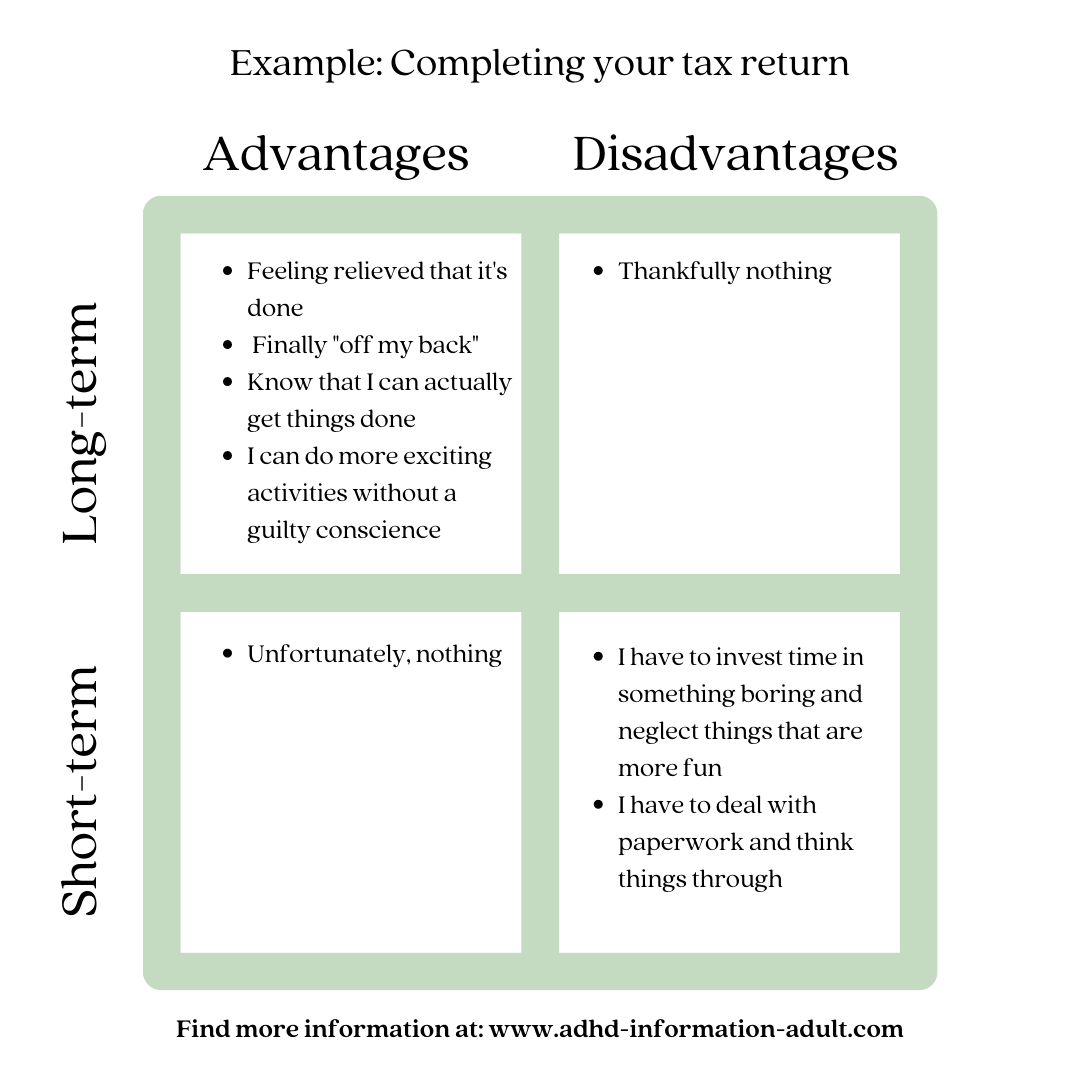In our last blog about ADHD, we discussed what ADHD is, how it typically manifests in women, information on diagnoses, and resources. Today we’re digging in deeper and sharing real, meaningful ways you can combat the symptoms of ADHD. From time management to emotional regulation and sorting paper chaos, these research-based strategies will provide you with straightforward approaches to ease stress and overwhelm so you can live a better, more satisfying life. Before we get started, let us remind you that you don’t need to do all the strategies mentioned to be productive and successful. Find what techniques resonate with you and leave the rest. Honor your humanness. It’s important to be gentle with yourself on your mental health journey.
Practical tools and interventions for ADHD mentioned:
The Pomodoro Technique
OHIO Technique
Evening Rituals
Four-Field Strategy
Bullet Journal
Mindfulness Techniques
Working from home - STACC
Pragmatic and Concrete Tips
The Pomodoro Technique
This method will help you with:
Improving focus
Limiting distractions
Reducing mental fatigue
Retaining motivation
Preventing burnout
What is the Pomodoro Technique?
Developed by Francesco Cirillo in the late 1980s, the Pomodoro Technique is a time management strategy that stops you from getting distracted so you can stay focused and on task. The technique consists of alternating between work and break sessions to improve focus and motivation while preventing burnout. By working in short spurts of 25 minutes, you are more likely to be productive while staying motivated. If you prefer to work in longer stretches, that works too! Use these times as a template and create a strategy that works for you. One option is 50/10 instead of 25/5. steps are below.
Decide on the task(s) you need to do
Set a timer for 25 minutes
Work on the task until the timer is up
Take a 5-minute break
After 4 cycles take a 15-30 minute break
Tips:
When deciding on the tasks for the day, organize them by importance and urgency.
While working on the task, avoid constantly checking the timer, or checking your phone.
To avoid distractions, put your phone on airplane or silent mode, or turn off notifications.
Don’t take your break in the same spot you were working. (Move your body!)
Respectfully communicate to the people around you that you are working and not to be distracted.
Track the number of Pomodoros needed during each task to better plan out your schedule for the future.
If a task requires multiple steps and takes more than 5 Pomodoros, break it down into smaller, simpler tasks.
What to do during breaks:
Make a snack
Stretch or exercise
Go for a walk
Listen to music
OHIO Technique
This method will help you with:
Problems with storage
Getting a grip on paper chaos
Managing your workload
Holding guilt
What is the OHIO Technique?
OHIO is an acronym that means Only Handle It Once. It refers to only handling things like mail, emails, texts, paperwork, bills, and ideas one time and one time only. If you’re anything like me, then you know the cycle of receiving an email or text, telling yourself, “I’ll get back to that later” just to forget about it, as it gets lost in your inbox never to be seen again. OHIO is the simple processing system that basically tells you, “Hey, let’s just get this over with before it takes up mental space". This technique helps you deal with things straight away without delaying, overthinking, or forgetting.
Create a specific place to do and save all paperwork
A filing tray, drawer, or box will do for paperwork like bills and mail. Assign a designated journal, notepad, or planner for to-do lists, and planning.
You can do this digitally too! For example, create a file on your desktop each month titled “Empty on (day at the of the month)” and keep all the items you’ve downloaded over the month stored there. At the end of the month go through the file, delete anything you don’t need anymore, and save what you do.
Define rules for bills and other time-sensitive items
For example, create a system where you pay at the end of the week or the beginning of the month.
Always keep pens, address books, stamps, and anything else you may need for the paperwork stored in the same area
This helps reduce the likelihood of being distracted or losing time while searching for the things you need.
Mark a specific date for working and sorting
Think about when you are most likely to have the time and energy to go through paperwork and files.
Remember to set realistic goals for yourself!
Tips:
Sometimes you can’t OHIO right away. When this happens, just put a specific reminder on your calendar or phone to respond to the task in the future. This gives you a deadline and you don’t have to worry about when or where it will get done.
If you find yourself avoiding a task, try to identify the root cause. Are you nervous? Do you need more information? Do you need to ask for help?
Evening Rituals
This method will help you with:
Difficulty getting to sleep or staying asleep
Lying awake for a long time
Combatting sleep disorders
Decreasing restlessness throughout the day
What are evening rituals?
An evening ritual is a system created specifically for you to help with winding down from the day and communicates to your mind and body that rest is near. Having a consistent and enjoyable form of structure at the end of the day can really help those of us who struggle with time management, insomnia, restlessness, and other symptoms of ADHD. See the steps below to create your own evening ritual.
Create an evening ritual
Ideally at the same time every day.
Examples: make a cup of tea, read a chapter of a book, make a “to-done” list, recite positive affirmations, use a gratitude journal, etc.
Have a media-free zone
Instead of scrolling until you feel tired, or watching Netflix to fall asleep, remove tablets, TVs, or laptops from your bedroom.
Go phone-free for the last hour before you sleep.
Read, journal, or draw instead.
Do a relaxation exercise to prepare your body for sleep
Some exercises to try: Jacobson’s progressive muscle relaxation (PMR), breathing techniques, guided meditations, and grounding exercises.
Approach your thoughts as clouds
People with ADHD often struggle at night especially by thoughts that just won't let up. Instead of pushing them away (which usually makes things worse), approach your thoughts as if they were clouds coming and going.
Watch your thoughts come and observe them without judgment and without trying to change, find meaning in, or indulge in them. Then watch them go.
5. Turn your clock around
If you always wake up around the same time during the night, this may mean that you look at the clock too often. Turn your alarm clock or any other clock in your room around before you fall asleep.
Tips:
When you wake up in the middle of the night, tell yourself, “There is still time, I can carry on sleeping.”
Be as consistent as you can! ADHD brains typically thrive off of consistency and structure.
Four-Field Strategy
This method will help you with:
Postponing specific tasks
Decision making
What is the Four-Field Strategy?
The Four-Field Strategy is a method to help you compare short-term and long-term advantages and disadvantages to better assess the consequences of a task or project. Because people with ADHD in particular often see short-term advantages and disadvantages as more important than longer-term ones, methods like this can really help to break down the decision-making process in an easy-to-understand way. Making decisions a little less daunting.
Ultimately, the list asks you, “Do you want to put up with something negative in the short-term to get something positive in the long-term?”
See the example for how to set up your own Four-Field strategy.
Tip:
Choose a reward (beforehand) to give yourself when a task is completed.
BULLET JOURNAL
This method will help you with:
Staying organized
Preventing burnout
What is a bullet journal?
If typical planners never seem to work for you, a bullet journal just may be the thing for you. Designer, Ryder Carroll created the bullet journal, an ADHD-friendly way to stay organized with the structure of a regular planner AND the freedom of a regular notebook. The best thing about bullet journals is that they are adaptable and made specifically for you. The most basic parts of the bullet journal are listed below.
The index
Include anything from birthdays to designated places to doodle to therapy notes. Add more sections as needed.
This helps keep track of any little note or list that might have been written on a random piece of paper, or napkin, and eventually lost.
The symbol key
Short-hand systems are commonly used by people with ADHD, and it’s likely that you already do this. It’s also likely that if you haven’t created a symbol key, you know the feeling of getting back to a note and having no idea what those random marks mean anymore. Creating a symbol key allows you to keep track of it all!
Yearly/monthly/daily layouts
Natural, visual, limits of time are key for people with ADHD who struggle with time management and planning.
Migration
Every month you will copy and paste the tasks you didn’t get to the month before. This keeps important things from falling through the cracks while letting unimportant things fade away.
Migration also helps you stay aware of the tasks that you tend to avoid. Remember to get curious about why you are avoiding certain things. It’s likely you have a negative emotional response triggered by something about the task, you are not just lazy.
Mindfulness Techniques
This method will help you with:
Strengthening attention
Managing emotions
Achieving your goals
Restlessness in your body
What is mindfulness?
Originated from ancient eastern and Buddhist philosophy, mindfulness is a mental state achieved by being conscious or aware of the present moment, while calmly acknowledging and accepting one’s feelings, thoughts, and bodily sensations. At its core, mindfulness allows you to sit with what is without judgment or trying to change anything. Yoga, meditation, and breathwork are all examples of mindfulness techniques. According to research, practicing mindfulness has been associated with benefits like improved memory, lower levels of anxiety and stress, and reduced emotional reactivity.
While it is true that mindfulness techniques and popular mindfulness apps can help with reducing stress and coping with emotions, it is important to clarify that many of them are not designed with spirituality in mind. Instead, many mindfulness apps and techniques are stripped of any cultural or spiritual significance and focused on Western ideas of efficiency: meditating to increase focus, productivity, and improve physical health. It’s important that we care about where our wellness practices come from and what appropriating them means.
Here are a few ways to practice mindfulness:
Yoga - Susanna Barkataki and Yoga with Adrianne
Paying attention to your thoughts and how you speak to yourself
Guided meditation - We recommend the Insight Timer and The Shine App
Breathwork - Find exercises for emotional regulation here
Doing your own research - Books like My Grandmother’s Hands By Resmaa Menakem and The Mindfulness Prescription for Adult ADHD By Lidia Zylowska, MD
Learn more about cultural appropriation and wellness:
Working From Home-STACC
This method will help you with:
Transitioning to work from home
Creating structure
What is STACC?
STACC is an acronym that stands for Structure, Transition time, Accountability, Connection, and Cues. These are the components for creating a satisfying and sustainable work-from-home routine perfect for anyone struggling with the responsibility of working from home. These components are often overlooked for those of us who have a difficult relationship with structure, especially when it’s optional. Because these components are pretty straight-forward and simple, ADHD brains can benefit from making it their own while staying true to a schedule.
Structure - Use time blocking to plan out your day
Transition time - Create rituals to help you transition between tasks
Accountability - Check in regularly with an accountability partner
Connection - Find creative ways to socialize
Cues - Create clear signals that it is time to work
Tips:
If you aren’t sure how to start creating time blocks, look back to an old schedule you used to have and modify it.
Be realistic with yourself and make time blocks bigger rather than smaller.
Transition rituals can be things like walking your dog after you’ve worked 2 hours, meditating before meetings, making coffee before you get started, or stretching after lunch. Get creative!
Accountability partners might feel annoying to establish at first, but they are a huge help with executive functioning. Don’t leave this step out.
Creative ways to stay connected while working from home include things like sending video or audio messages instead of text, calling a friend during transition a time, and scheduling lunch with a friend over zoom.
Cues to begin working can be things like designating a specific playlist for work, using a different mouspad for work and play, and having a dedicated work space.
To communicate to your family or housemates, try Brendan Mahan’s ADHD cup technique. All you need is a green, yellow, and red cup, sticky note, or pencil to place in front of you while you are working. Green means it’s okay to chat, yellow means I can chat but only if it’s important, and red means do not interrupt me unless of an absolute emergency.
For more information: A Simple Guide to Working/Learning From Home: HOW TO ADJUST
Pragmatic and Concrete Tips
For stress-free daily living.
Problem: “I don’t realize when I am distracted from work and indulge my thoughts.”
Concrete tip: Put reminder symbols where you typically look when drifting away (like a red sticker on the window).
Problem: “I always say yes immediately when I am asked to help, but then I realize that It’s actually too much for me.”
Concrete tip: Wait on it and say, “I’ll think about it and let you know tomorrow.” Then you can decide in peace whether you really want to do it and have enough energy.
Problem: “I’m always misplacing my keys.”
Concrete tip: Attach a key hook or bowl directly next to the front door and always put them there. Ask family members or housemates for help: “If you see my keys anywhere else, please hang them on the hook.”
For more information go to www.adhd-information-adult.com
Resources
one last note
Your brain may work differently than what is expected by our neurotypical society, but that doesn’t mean you are broken or incomplete. Our goal is not for you to use these methods to be a productivity machine or to rid of all ADHD symptoms so you can better fit into this world. No. Our goal in sharing these tools and techniques is to provide you with loving and compassionate guidance so you can exist happily in your wholeness. You are always allowed to redefine what productivity looks like, what thriving looks like, and what success looks like.











ADHD in adults—and especially in women—is finally getting the recognition it deserves. For years, countless women were misdiagnosed or overlooked because their symptoms didn’t look like the stereotypical “hyperactive boy.” Instead, they battled quiet chaos: disorganization, overwhelm, forgetfulness, and the creeping anxiety that follows.
The latest research shows that treating ADHD often reduces anxiety by addressing the root causes of daily stress—executive functioning challenges like planning, time management, and emotional regulation. From practical strategies like the OHIO technique (“Only Handle It Once”) to calming evening rituals that reset the brain, there are concrete tools that can transform frustration into confidence.
If you’ve ever wondered why anxiety seems to follow your ADHD everywhere, this post will help you connect the dots—and give you actionable steps to build structure, find calm, and finally feel in sync with your brain.